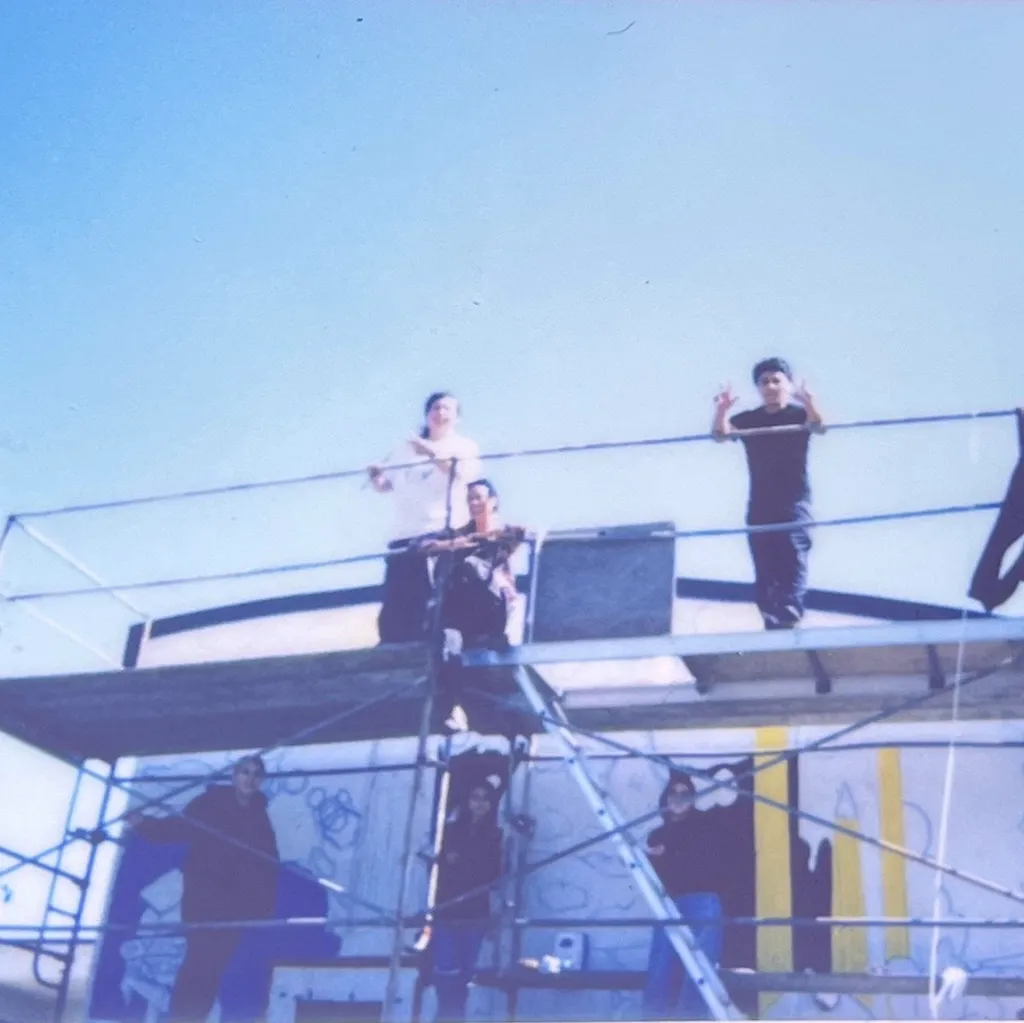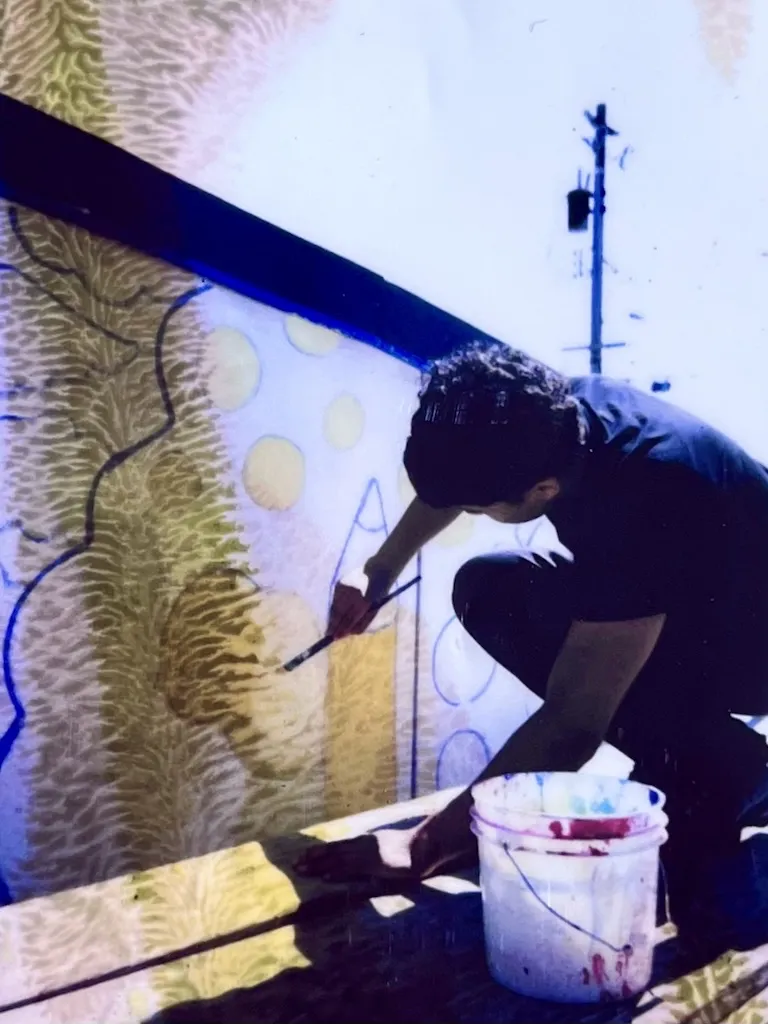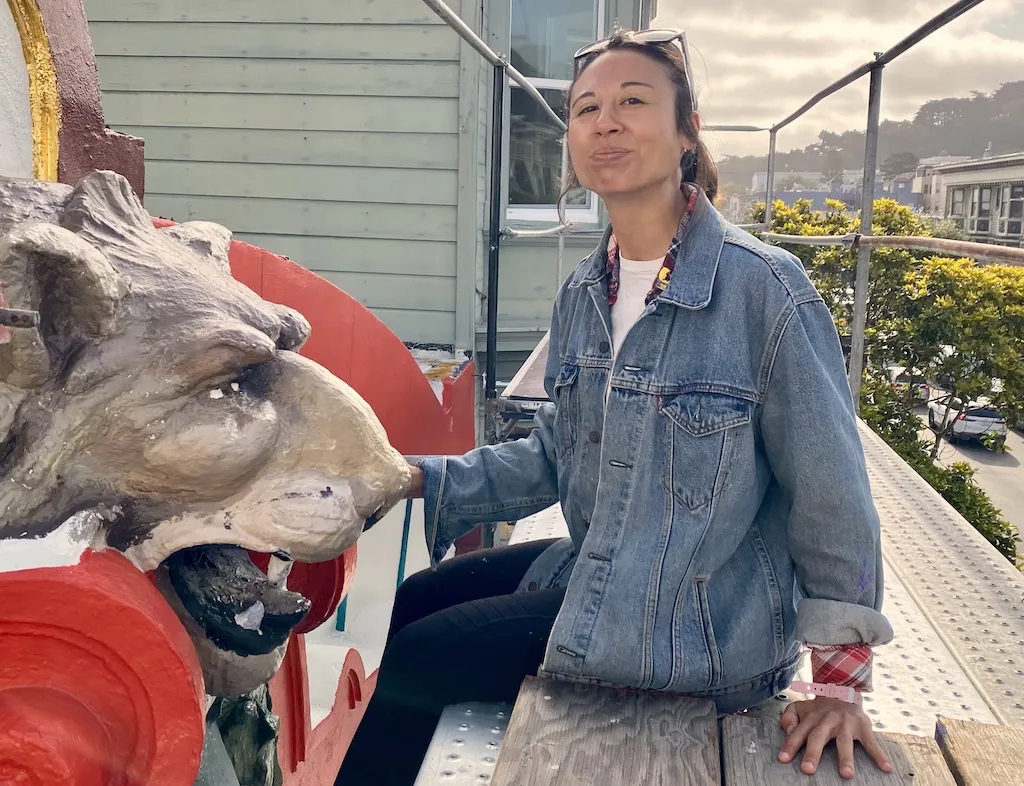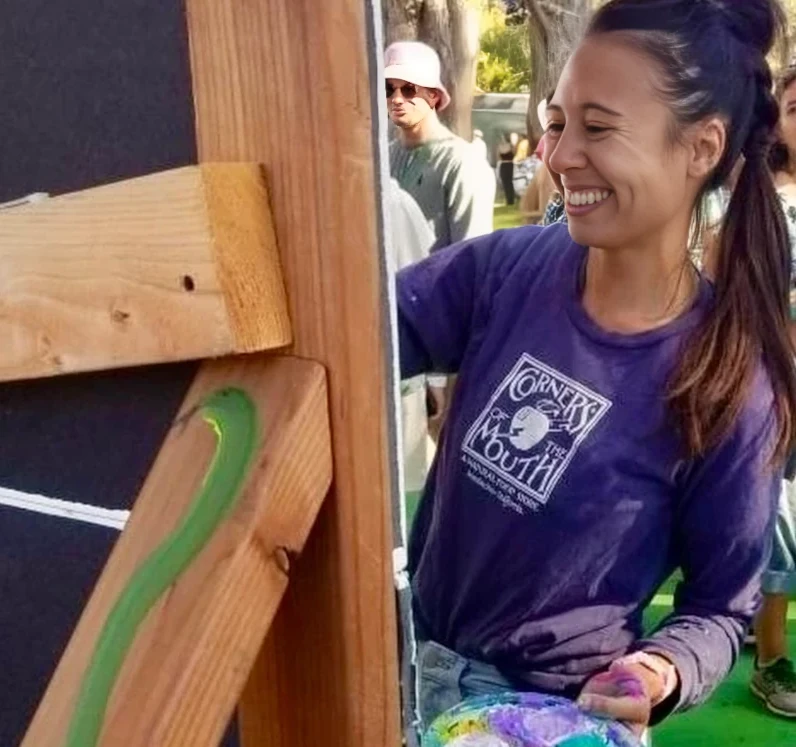Initial Motivation for Biofeedback Art
When did you start exploring the intersection of biological data and artistic expression? What sparked your interest in this field?
Around 2016 or 2017, I fell into a depth of contemplation practice I didn’t see coming. I was a newbie Zazen practitioner at Against the Stream meditation center on San Francisco’s Folsom Street. I graduated from California College of the Arts, and was working as an in-house artist under the marketing branch of a pre-Amazon Whole Foods Market.
Michael Taft led a multi-hour daylong death meditation on Saturdays in those days (I believe he still does elsewhere in the Bay Area). During one sit we were introduced to the practice of meditating with the eyes open.
I remember light seeping through the jamb of the front door. The room was soft and blurry, like looking through a smudged, light-soaked window. We were guided to let the images pass through the window of the eyes, as if there were a reel projector casting film onto the dark wall of the cranial skull.
I wouldn’t say this was the big “a-ha!” moment for me, but this memory stands out in my mind as a turning point when I started to understand the mind as a perpetually active and precious seer.
What sparked in me was a fire to protect the mind from a normed, bloated diet of visual stimuli.
Impact and Aspirations
Where would you like to see the greatest impact of your work? What specific outcomes or changes are you hoping to achieve through your projects in academia, industry or public?
I seek to reform visual arts curriculum in public school education. Working as a school muralist has helped me see the ways that visual art sparks conversations on social identity. The students I work with often express readiness to have conversations on the perception and reception of race, particularly with regard to how they embody their own multifaceted identity.
I realize that public school education doesn’t teach visual art as a necessary skill. However, research on colorful learning spaces reveals potential for greater student focus, lessened instances of truancy, and opportunities for cultivating bridging and bonding relationships through shared activities.

It is my hope that teaching visual criticality will benefit social connectivity within school communities and support the synthesis of STEM heavy approaches to learning. Some of the more lucrative sectors of the workforce value those skilled at influencing visual perception to accelerate meaning making and decision. Learning to become a creator is only one half of the task at hand. We must make a dedicated effort to teach the public how to consume the constant inflow of images we receive. Doing so can only benefit how we understand one another and how we work together toward developing equity across vulnerable identities.
Teaching others to recognize how the mind is subtly influenced by visual input is critical, and anyone can take up this practice. One place to start is by learning to spot the machinations of neighborhood planning. For example, behavioral interventionists know park-goers are more likely to throw away trash if footprints are painted on the path to the trash bin.
Start by looking at the shape of manmade structures around you. Notice if buildings are angular and pointed or smooth and rounded. What texture do you see? How would it feel to touch? Say aloud the colors you see. What patterns are dominant? How do you feel looking at these spaces? Are there stairs? Is there a ramp? What must you do to move yourself from where you are to get to the front door? Are the sidewalks wide or narrow?
How easy is it to come into contact with other people?

Future
Where do you see the field of biofeedback art research in the future?
I believe centering visual art and teaching visual criticality will allow us to hold close the future impact of our present actions. I see an opportunity to contribute eye tracking on how art viewers perceive race in the context of art. I draw inspiration from the 2016 Gilliam et al. study at the Yale Child Study Center, the 2019 Hughes et al. study, “Neural Adaptation to Faces Underlies Out-Group Homogeneity Effect,” and neuroimaging and fMRI research conducted by Eric R. Kandel. Each of these studies measure an aspect of the physical automatic responses to the perception of race and visual art.

Last updated: 14 July 2025
